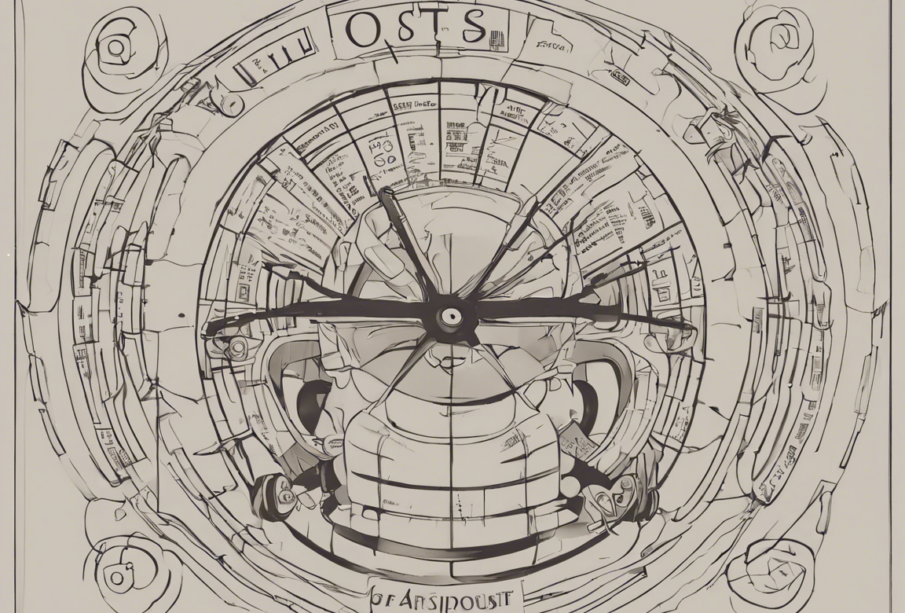Understanding OST: What Does OST Stand For?

OST: The Basics
What Does OST Stand For?
OST stands for “Original Soundtrack.” An OST refers to the music or songs that are recorded for a specific film, television show, video game, or even a stage production. These soundtracks are often written specifically for that piece of media and are an integral part of its overall experience. The OST helps to set the mood, convey emotions, and enhance the storytelling.
History of OST
The Evolution of OSTs
Over the years, OSTs have become an essential element of the entertainment industry. Initially, soundtracks were primarily instrumental pieces that complemented silent films in the early 20th century. However, with the advent of sound in cinema, OSTs evolved to incorporate songs with lyrics that could enhance the narrative of the visual media.
OSTs in Film
In the realm of movies, OSTs play a crucial role in creating atmosphere and emotion. They often include a mix of instrumental background scores and songs that are featured prominently in key moments of the film. Iconic movie soundtracks such as those from “Titanic,” “The Lion King,” and “La La Land” have become as memorable as the films themselves.
OSTs in Television
Television shows also rely heavily on original soundtracks to create mood and enhance storytelling. Whether it’s the ominous theme song of “Game of Thrones” or the nostalgic tunes of “Stranger Things,” OSTs can become synonymous with the shows they represent.
OSTs in Video Games
In the realm of video games, soundtracks play a unique role in enhancing the gaming experience. Game developers carefully choose music that complements the gameplay, whether it’s to build tension during a boss battle or to evoke a sense of wonder in an open-world environment. OSTs in video games are often dynamic, changing based on the player’s actions to immerse them further into the game world.
OSTs in Other Media
Beyond film, television, and video games, OSTs are also prevalent in other forms of media such as stage productions, advertisements, and even theme parks. The right music can leave a lasting impact on the audience and elevate the overall experience, making OSTs a versatile and powerful tool across various mediums.
Creating an OST
The Process of Crafting an OST
Crafting an original soundtrack is a collaborative process that involves composers, directors, producers, and music supervisors. The goal is to create a cohesive audio experience that enhances the visual storytelling. Here’s an overview of the steps involved in creating an OST:
-
Conceptualization: The process begins with discussions between the creative team to establish the tone, style, and themes of the soundtrack.
-
Composing: Composers then set to work creating music that aligns with the project’s vision. They may draw inspiration from the narrative, characters, or settings to develop themes and motifs that resonate with the audience.
-
Recording: Once the music is composed, it is recorded either with live orchestras, solo artists, or through digital means to bring the soundtrack to life.
-
Editing and Mixing: The recorded tracks are then edited and mixed to ensure the perfect balance of instruments, vocals, and sound effects.
-
Integration: Finally, the OST is integrated into the final product, whether it be a film, TV show, video game, or other media, to create a seamless audio-visual experience.
Key Elements of an OST
What Makes a Great OST
Several key elements contribute to the success of an OST:
-
Theme: A strong thematic element can tie the entire soundtrack together and create a sense of coherence.
-
Emotional Impact: Great OSTs evoke a wide range of emotions, from joy to sadness, to elevate the storytelling.
-
Memorability: Memorable OSTs have the ability to stay with the audience long after they have experienced the media.
-
Variety: A good mix of musical styles and genres can keep the soundtrack engaging and dynamic.
-
Timing: The placement of music within the media is crucial. The right music at the right moment can enhance the impact of a scene significantly.
FAQs about OSTs
-
What’s the difference between an OST and a soundtrack?
An OST specifically refers to music created for a particular piece of media, whereas a soundtrack can refer to any collection of music used in a film, show, or game, including pre-existing songs. -
Do all films and shows have original soundtracks?
Not all films and shows have original soundtracks. Some productions may opt to use pre-existing music or licensed tracks instead of commissioning an original score. -
Can I listen to OSTs outside of watching the film or show?
Yes, OSTs are often released as albums that fans can listen to independently of the media they accompany. These albums may contain additional tracks or variations not included in the final production. -
Are composers and artists recognized for their work on OSTs?
Absolutely. Composers and artists who contribute to OSTs are often celebrated and recognized for their work through awards such as the Academy Awards (Oscars) for Best Original Score. -
Can OSTs influence how a film or show is perceived?
Definitely. The right music can enhance storytelling, evoke emotions, and even shape how audiences interpret the visuals on screen. A well-crafted OST can elevate the overall impact of a film or show. -
Are there any iconic OSTs that have stood the test of time?
Yes, many OSTs are considered iconic and timeless, such as those from “Star Wars,” “The Godfather,” “Jurassic Park,” and “Harry Potter,” to name a few. -
Do video game OSTs differ from film and TV OSTs?
Video game OSTs often have a more interactive nature, with music adapting to a player’s actions and choices. This dynamic element sets them apart from traditional film and TV soundtracks. -
How do composers and directors collaborate on creating an OST?
Collaboration between composers and directors is essential for creating a cohesive OST. Directors often provide guidance on the tone, pacing, and emotional beats they want to achieve, while composers bring their musical expertise to the table to enhance the storytelling. -
What role do OSTs play in enhancing storytelling in media?
OSTs serve to complement the visuals on screen by reinforcing emotions, setting the mood, and guiding the audience’s interpretation of the narrative. They can build tension, evoke nostalgia, or highlight pivotal moments within the media. -
Can OSTs influence the success of a film, show, or game?
Absolutely. A well-received OST can enhance the overall experience of a film, show, or game, making it more memorable and impactful. A standout OST can also attract a wider audience and contribute to the success of the media it accompanies.
In conclusion, OSTs play a vital role in the entertainment industry, enriching the audience’s experience and enhancing storytelling across various forms of media. From setting the mood to conveying emotions, a well-crafted OST can elevate a film, show, or game to new heights, leaving a lasting impression on audiences worldwide.

